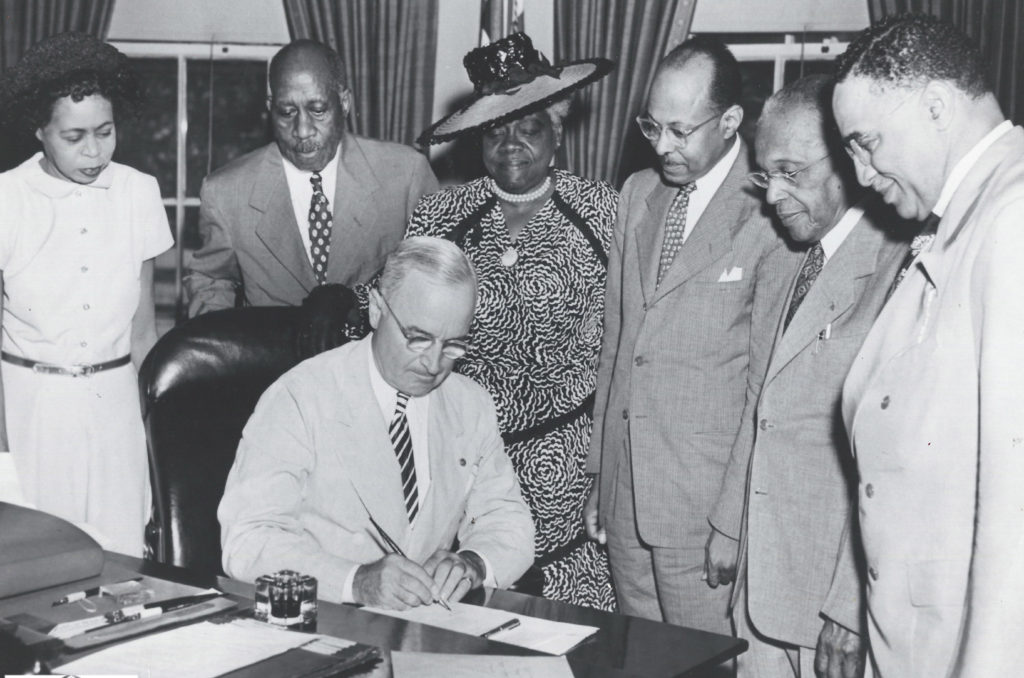
FEBRUARY 1
National Freedom Day
National Freedom Day was signed into law on June 30, 1948 by President Harry Truman, but it was conceptualized by Major Richard Robert Wright, Sr. Born into slavery and freed after the Civil War, Wright believed there should be a day when freedom for all Americans is celebrated. He invited national and local leaders to meet in Philadelphia to make plans to designate February 1 as an annual memorial to the signing of the 13th Amendment to the U.S. Constitution which freed all U.S. slaves. One year after Wright’s death in 1947, both houses of the U.S. Congress passed a bill to make February 1 National Freedom Day.
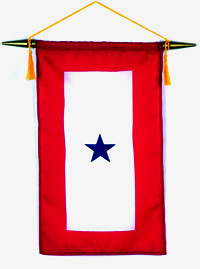
FEBRUARY 1, 1942
Blue Star Mothers of America is formed in Flint, Michigan
The Blue Star Mothers of America was formed by 300 mothers in Flint, Michigan, with the first meeting chaired by Captain George H. Maines. The Service Flag, also called the Blue Star Flag, was designed and patented by World War I U.S. Army Captain Robert L. Queisser of the 5th Ohio Infantry who had two sons serving on the frontline. The flag quickly became the unofficial symbol of households with a child in military service.
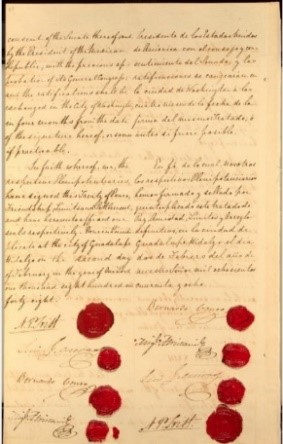
Last page of the Treaty of Guadalupe-Hidalgo, with signatures and seals. 1848.
FEBRUARY 2, 1848
The Treaty of Guadalupe Hidalgo was signed
The Mexican-American War ended when the Treaty of Guadalupe Hidalgo was signed. The treaty called for the United States to pay $15 million to Mexico and pay off the claims of American citizens against Mexico up to $5 Million. It also set the Rio Grande River as a boundary for Texas, and gave the U.S. ownership of California, Nevada, Utah and Colorado as well as an area comprising most of New Mexico and approximately two thirds of Arizona. Mexicans in those annexed areas could relocate within Mexico’s new boundaries or receive American citizenship with full civil rights.
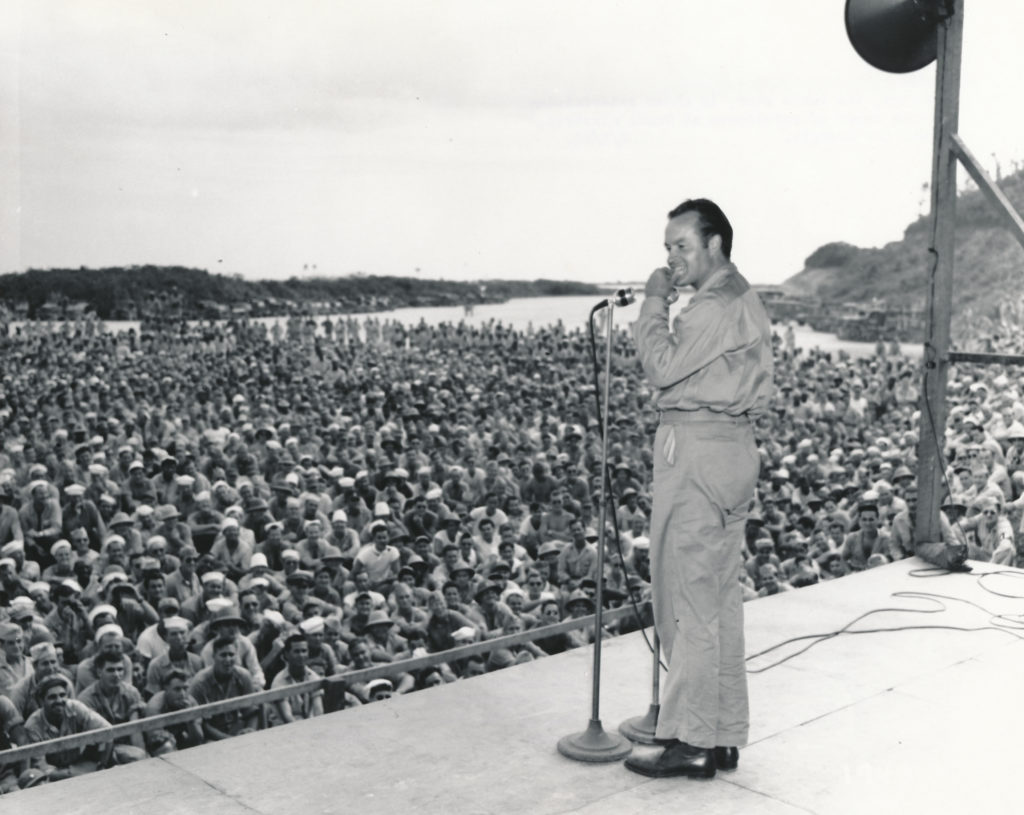
FEBRUARY 4, 1941
The USO celebrates its 81st Birthday
The USO celebrates its 81st Birthday. Founded on February 4, 1941, the USO has been the nation’s leading organization serving men and women in the U.S. military and their families throughout their time in uniform. During World War II, the USO sought to be the GI’s “home away from home” and began a tradition of entertaining the troops that continues today.
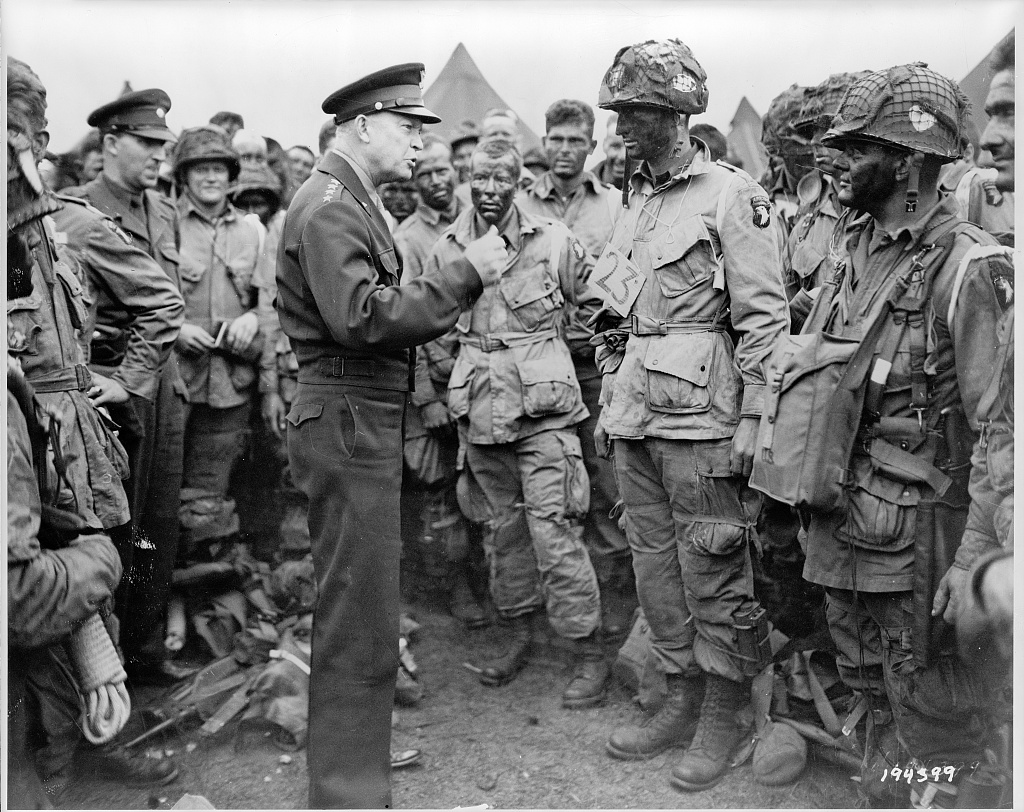
General Eisenhower meets with US Paratroopers
before D-Day. June 5, 1944.
FEBRUARY 11, 1943
General Dwight D. Eisenhower begins command of the allied armies
General Dwight D. Eisenhower was selected to command the allied armies in Europe. The official title given to Eisenhower was Supreme Commander of the Allied Expeditionary Force. He was responsible for planning and supervising the invasion of North Africa in Operation Torch in 1942 – 43 and the successful invasion of Normandy from the Western Front in 1944 – 45. From 1953 – 1961, he went on to serve as the 34th president of the United States.
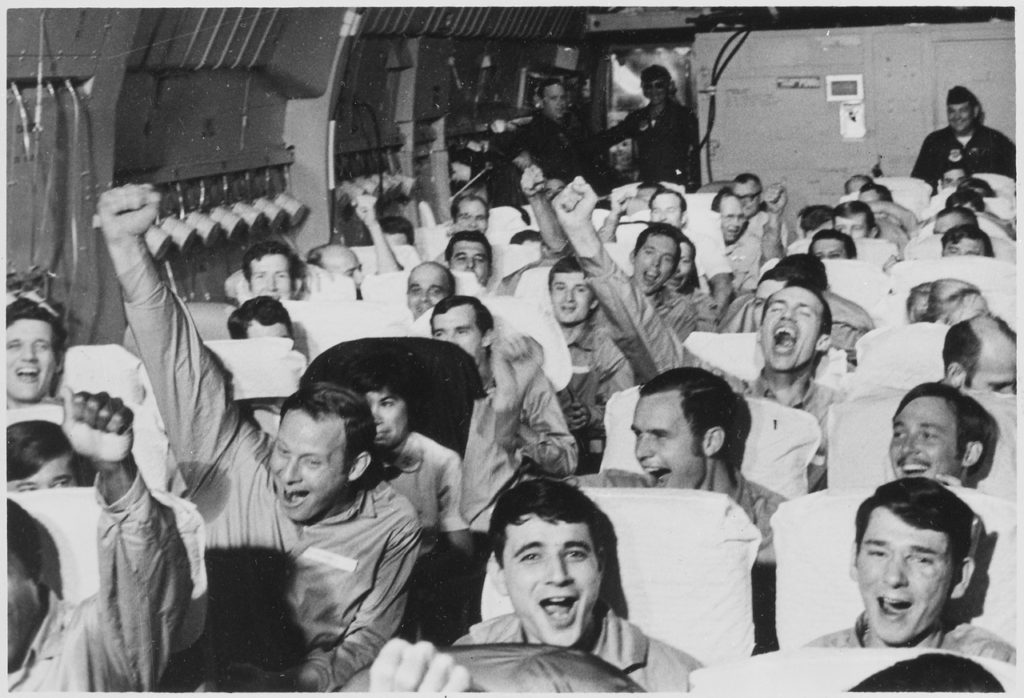
Newly freed prisoners of war celebrate as their C-141A aircraft lifts off from Hanoi, North Vietnam, on Feb. 12, 1973, during Operation Homecoming.
FEBRUARY 12, 1973
Operation Homecoming
Operation Homecoming began. The operation returned 591 American Prisoners of War (POWs) held by North Vietnam following the Paris Peace Accords that ended U.S. involvement in the Vietnam War. From February 12 to April 4, 1973, there were 54 C-141 missions flying out of Hanoi, bringing former POWs home. Of the POWs repatriated to the United States, a total of 325 served in the U.S. Air Force, a majority of whom were bomber pilots shot down over North Vietnam or Viet Cong controlled territory. The remaining 266 consisted of 138 U.S. Navy personnel, 77 soldiers serving in the U.S. Army, 26 U.S. Marine Corps members and 25 civilian employees of American government agencies.
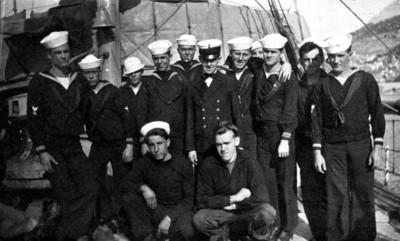
FEBRUARY 19, 1941
U.S. Coast Guard Reserve was established
The U.S. Coast Guard Reserve was established with the passage of the Coast Guard Reserve and Auxiliary Act. The Coast Guard depends on the Reserve force to mobilize with critical competencies in boat operations, contingency planning and response, expeditionary warfare, marine safety, port security, law enforcement and mission support. We honor the more than 7,000 reservists who stand always ready!
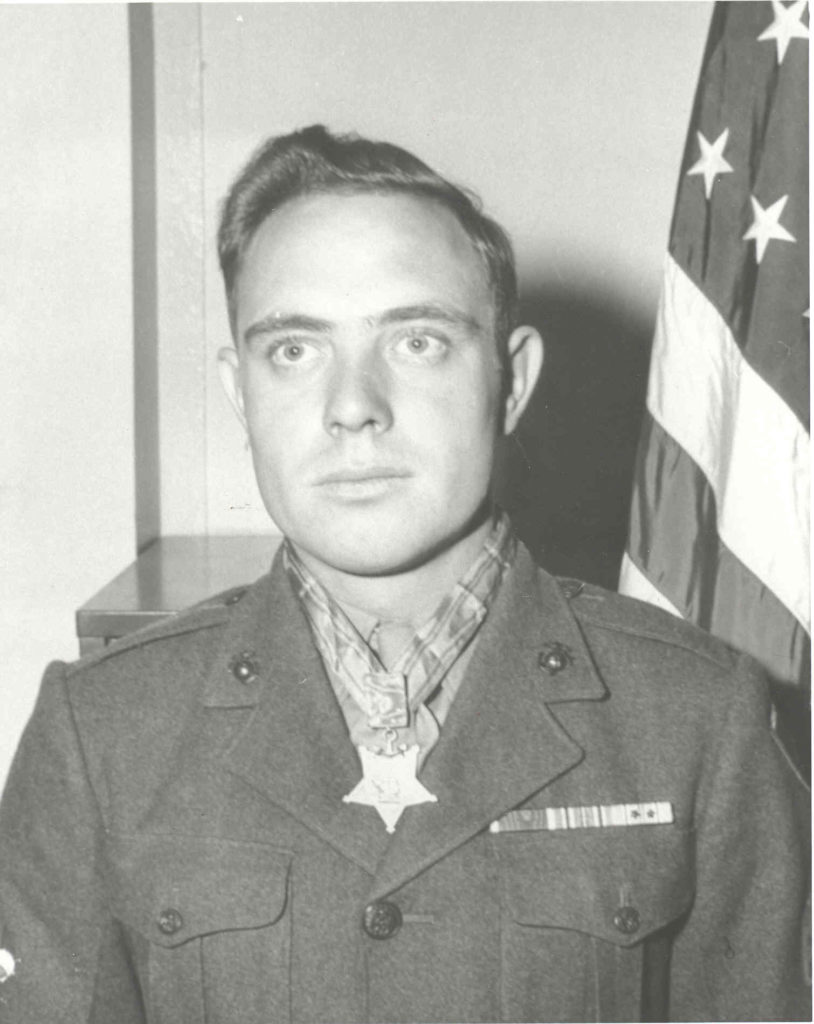
FEBRUARY 19-23, 1945
U.S. Marine Corps Chief Warrant Officer 4 Hershel “Woody” Williams earns the Medal of Honor
U.S. Marine Corps Chief Warrant Officer 4 Hershel “Woody” Williams distinguished himself during the Battle of Iwo Jima and was presented with the Medal of Honor for his actions on October 5, 1945. The Battle of Iwo Jima, designated Operation Detachment, was a major battle on the island of Iwo Jima between the U.S. Marine Corps, U.S. Navy forces and the Imperial Japanese Army. This five-week battle comprised some of the fiercest and bloodiest fighting of World War II. On February 21, Williams landed on the beach with the 1st Battalion, 21st Marines, 3rd Marine Division. Two days later, American tanks attempting to create a lane for infantry encountered a network of reinforced concrete pillboxes. Pinned down by machine gun fire, the company commander asked one of his men to attach a high explosive charge to a pole and, with support of Williams and his flamethrower and several Marine riflemen, shove the improvised weapon into an opening in the enemy’s pillbox. As they fought their way forward, all the men except Williams became casualties. Undeterred, Williams arrived at the first pillbox, pushed the flamethrower nozzle into the pillbox, fired and killed all the soldiers inside. He then returned five times to his company, refueled and moved forward to destroy the remaining pillboxes. Williams is the last living Medal of Honor recipient from World War II.
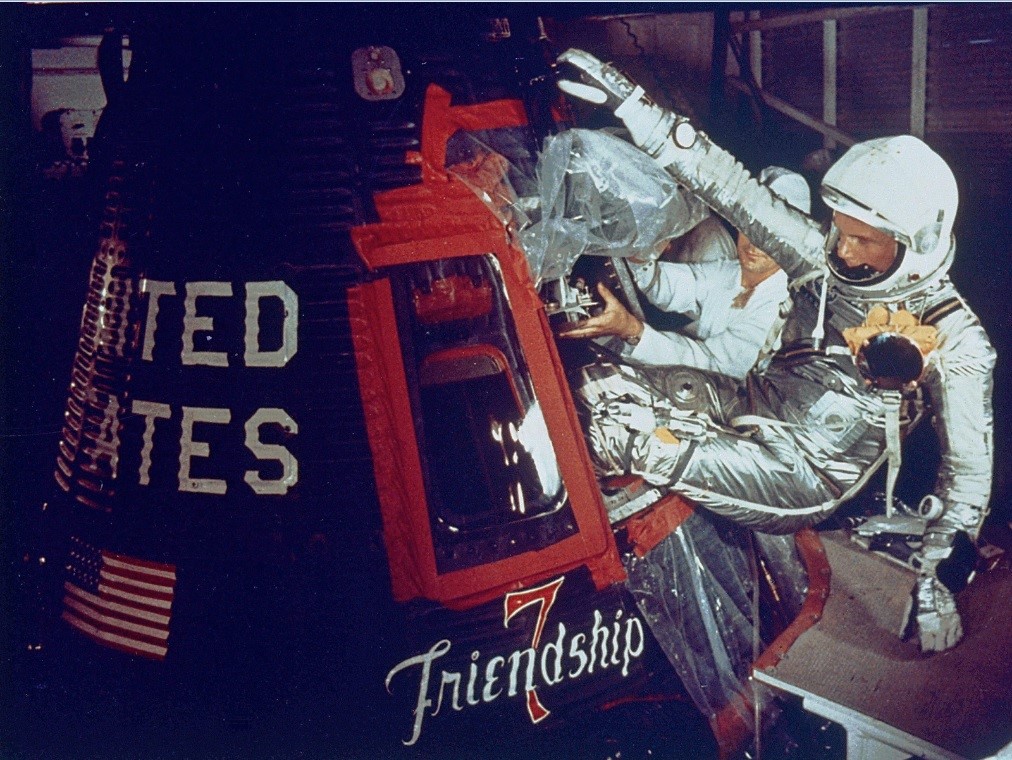
Glenn climbs into his Friendship 7 capsule for his historic flight
FEBRUARY 20, 1962
John Glenn became the first American to orbit the Earth
U.S. Marine Corps Lt. Colonel John H. Glenn, Jr., at the time, became the first American to orbit the Earth. After a long series of delays, Friendship 7 lifted off from Cape Canaveral Air Force Station. Glenn named the spacecraft, Friendship 7, and had the name hand-painted on the side like one of his F-86 planes. The flight lasted a total of four hours, 55 minutes and 23 seconds and allowed Glenn to circle the Earth three times. This launch was part of the space race between the United States and the Soviet Union in which America was lagging. Glenn became a national hero, met President John F. Kennedy and received a ticker-tape parade in New York. On February 23, Glenn received the NASA Distinguished Service Medal as well as his sixth Distinguished Flying Cross for his Friendship 7 flight.
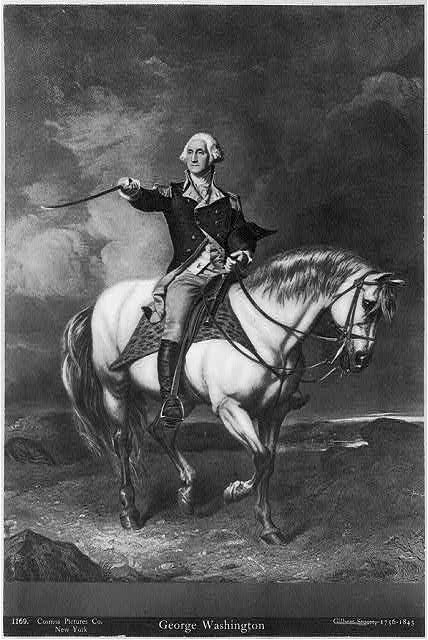
FEBRUARY 22
George Washington’s Birthday
President George Washington’s Birthday is celebrated. Washington served as the first president of the United States from 1789 to 1797. Appointed by the Continental Congress as commander of the Continental Army, he led Patriot forces to victory in the American Revolutionary War and presided at the Constitutional Convention of 1787, which established the U.S. Constitution and federal government. He has been called the “Father of the Nation” for his leadership in the formative days of the United States.
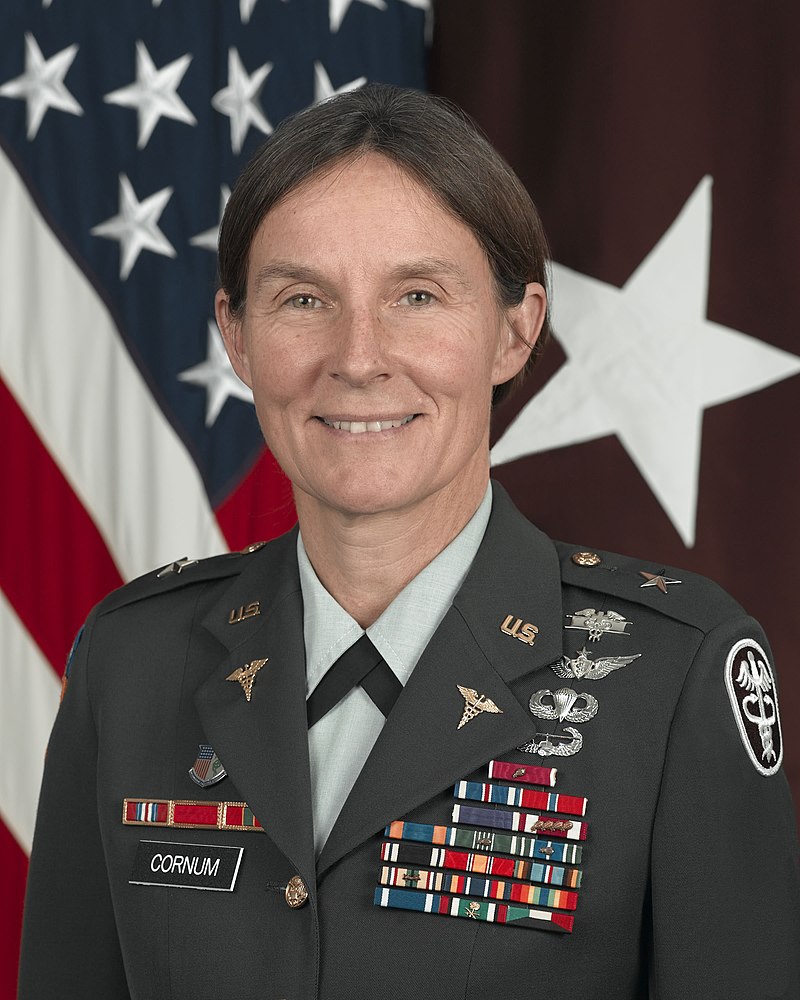
FEBRUARY 27, 1991
Brigadier General Rhonda Cornum, U.S. Army (Retired) was shot down by enemy fire
Brigadier General Rhonda Cornum, U.S. Army (Retired) was shot down by enemy fire. A native of Dayton, Ohio, she was the first woman flight surgeon to enter combat with the 2nd Battalion, 229th Aviation Regiment during the Persian Gulf War. While performing a search and rescue mission, her Black Hawk helicopter was shot down by enemy fire. She suffered two broken arms, a broken finger, a gunshot wound and other injuries. Cornum was captured, taken prisoner and assaulted by one of her Iraqi captors. She was held prisoner for a week in Baghdad and released on March 5, 1991. Cornum has received many military honors, including the Bronze Star, the Distinguished Flying Cross and the Purple Heart.
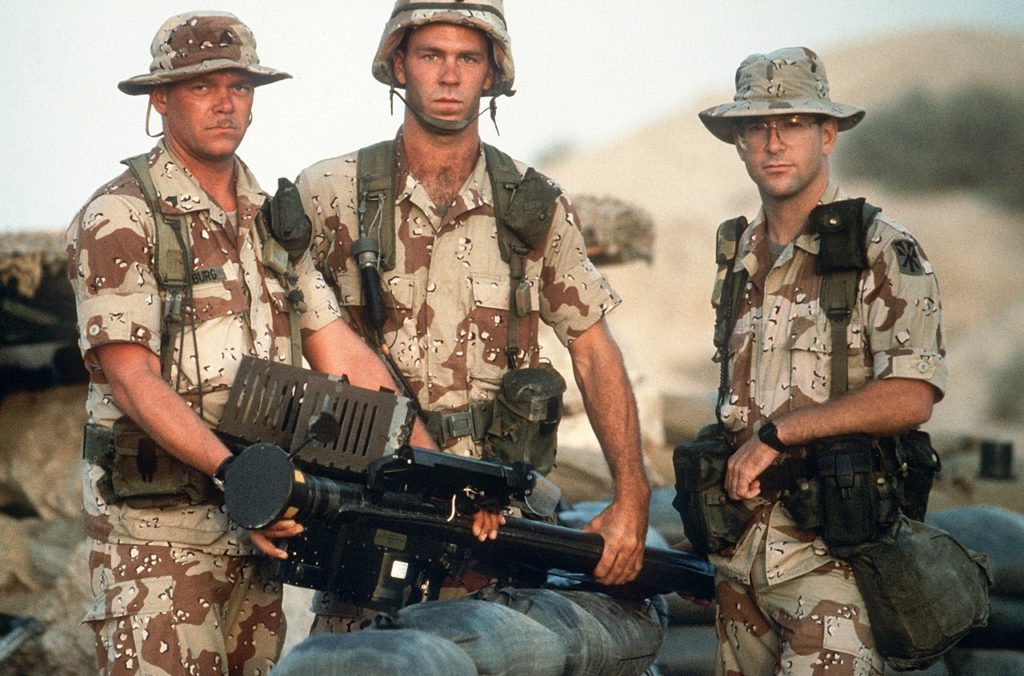
Members of Btry. A, 5162nd Air Defense Arty. Regt., 11th Air Defense Arty. Brigade, hold an FIM-92A Stinger portable missile launcher as they pose for a photograph during Operation Desert Shield.
FEBRUARY 28, 1991
Persian Gulf War ends
The Persian Gulf War ended. A coalition of service members successfully entered Kuwait on February 24 and allowed British forces to enter 15 hours ahead of schedule. While there was resistance, by February 27, Kuwaiti forces were able to liberate Kuwait City. Later that same day, Saddam Hussein ordered a retreat of Iraqi forces from Kuwait, and President George H. W. Bush announced, “Kuwait is liberated.” The U.S. Marine Corps arrived at the International Airport in Kuwait to secure the area, and several hours later combat operations were ended.



